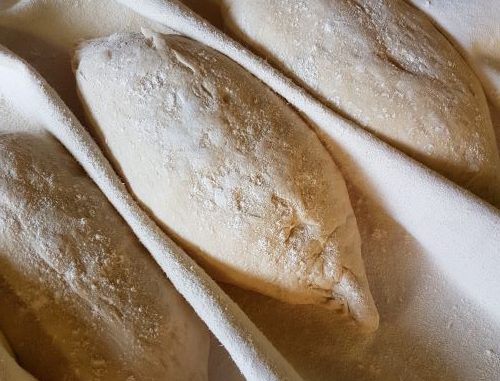
Never let no one know how much dough you hold
~ The Notorius B.I.G ~
Well, I know that Mr B.I.G did not mean bread dough, but I enjoy thinking he would have felt the same about it. The joy I get from shaping bread dough makes this quote very applicable as far as I’m concerned. I will even confess to feeling deprived if for some reason I don’t do my weekly baking. I love the smell of the sourdough and the sounds it makes when I work with it. It is actually quite therapeutic! Another reason why I love slow cooking and making food from scratch. Shaping bread dough is also just about the hardest part of artisan bread baking. But don’t be discouraged, it’s really just like playing with play-dough!
Preshape and Shape
The shaping process is very important for making beautiful loaves. It can be tricky, but it is very rewarding to master the process and will give you lots of freedom in the types of bread you can make. A very important point is not to rush the process. As Chad Robertson says: take your time – it will only make the bread better. Once your dough has completed the bulk fermentation period, it needs to be divided, preshaped and then rested again before the final shaping. The resting period is called the bench rest. The preshaping does add to the internal structure of the loaf, so don’t skip this step! Try to handle the dough lightly without knocking out too much gas. I do pop obvious bubbles though as I don’t like large holes in my final loaves.
A word on loaf tins and bannetons
There are lots of options on loaf shaping. I initially battled with the shaping of the loaves and decided to stick to using sandwich loaf tins for a while. I now always make one of the three loaves I bake each week in a loaf tin as that is great for lunchbox sandwiches.
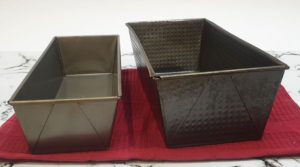
If you want to make a round or oblong bread without using a tin, you need to have an appropriate container in which to place the shaped loaf for its final proofing. Lots of kitchen containers can do the job here, like glass Pyrex dishes or mixing bowls. Be sure to line whatever container you use with a very well-floured cloth. Using rice flour for this step works best. I don’t wash the cloth I use inside containers. I just let them dry after use, shake out loose bits and store them in a sealed plastic bag. This way the cloth really gets impregnated by the flour and the loaves rarely stick to it. Look at Patrick Ryan’s YouTube sourdough masterclass to see how he even uses the glass oven dish to bake the bread in.
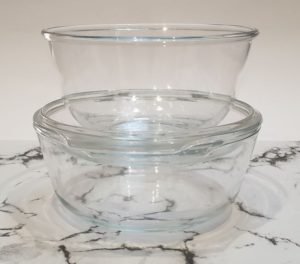
Of course, you can buy a banneton or two for this purpose. Bannetons leave beautiful impressions in the loaves which adds to the “artisanal look”.
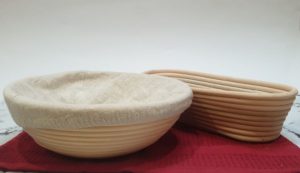
Knocking things into shape
Actually, you will not be knocking anything as we want to preserve as much gas as possible in our dough. But this is the big step. You are creating the tension around the outside of the loaf that will keep it up while the bread is baking. If your loaf doesn’t have enough structure it will sag and lose its beautiful volume. Of course, there are lots of shaping videos on the internet and I am by no means a master at it. Try out some methods and find what works for your dough, your containers and your skill level.
If you are making a round bread (called a Boule), you can simply shape the round as I did in the preshaping video. Just make sure you get lots of surface tension all around. Now your loaves are ready for a nice long final proof before you bake them and enjoy them!
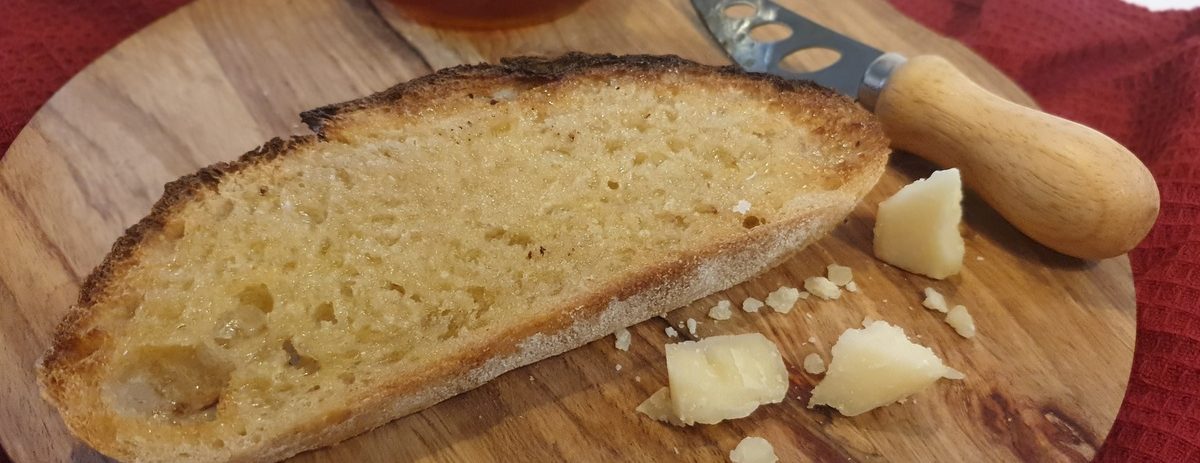
Leave a Reply